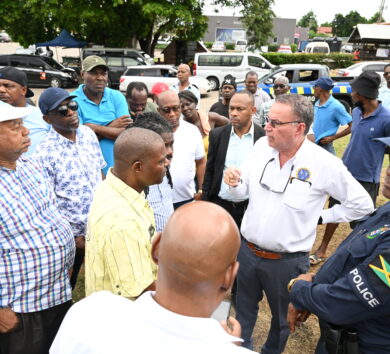

Food exports from St Vincent and the Grenadines increased during January 2022, signalling a recovery in the domestic agriculture sector after the severe impact of the La Soufriére volcanic eruptions last year.
A total of 516,753 kilogrammes of agricultural and fisheries products, valuing US$1.3 million, were sold by the island nation to thirteen countries in January, according to data disseminated by the Ministry of Agriculture, Forestry and Fisheries.
An interannual comparison to January 2021 reveals that there has been a five per cent increase in the quantity of exported products and a 38 per cent increase in the value.
It began with the first, large eruption of La Soufriére on April 9, 2021, and St Vincent experienced 32 other eruptions thereafter.
The natural disaster forced the evacuation of some 30,000 people from their homes, most of them registered farmers, given that the majority of the land adjoining the volcano is used for agriculture.
Many farmers lost crops due to the ashfall on their land, compelling the government to declare a food security emergency. The state gave economic assistance to small farmers and hired tractors to plough the land to enable crops to be sown again.
The Caribbean Agricultural Research and Development Institute (CARDI), in its joint preliminary damage and loss assessment report, found that the impact of falling volcanic ash and dust from La Soufriére ranged from a low of seven per cent in the ‘green disaster zone’ to 100 per cent for a substantial number of commodities in the ‘red’ and ‘orange’ zones.
“The value of total damage and loss sustained by the crops, livestock, apiculture, fisheries and forestry sectors is estimated to be more than XDC$142 million (Eastern Caribbean dollars),” CARDI reported in May 2021.
The country received the support and solidarity of organisations and governments from the Americas and other parts of the world.
Among them, Agriculture Minister Saboto Caesar recognised the importance of the support of the Inter-American Institute for Cooperation on Agriculture (IICA) to rapidly revive production and guarantee food security.

Agriculture in the Vincentian archipelago is largely in the hands of small, family farmers. Caesar indicated that the country has approximately 8,000 and 1,500 registered farmers and fisherfolk, respectively.
The United States was the main destination for the country’s exports in 2022, which represented a value of more than US$300,000. Trinidad and Tobago and Barbados followed in second and third place. The other ten export destinations were Anguilla, Bouvet Island, the British Virgin Islands, Canada, France, Great Britain, Grenada, St Kitts and Nevis, St Lucia and St Martin.
In total, there were 42 types of exported agricultural and fisheries products, including tubers, vegetables, fruit, spices and lobster.
Caesar noted on Monday (February 21), that St Vincent will be undertaking its first agriculture census in 20 years, to give the Government a more accurate idea of what the shortfalls are within the sector and called for farmers to participate.






Comments